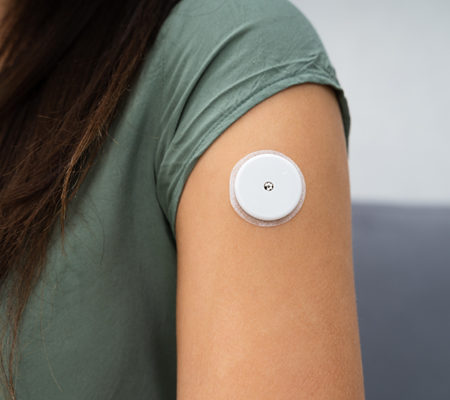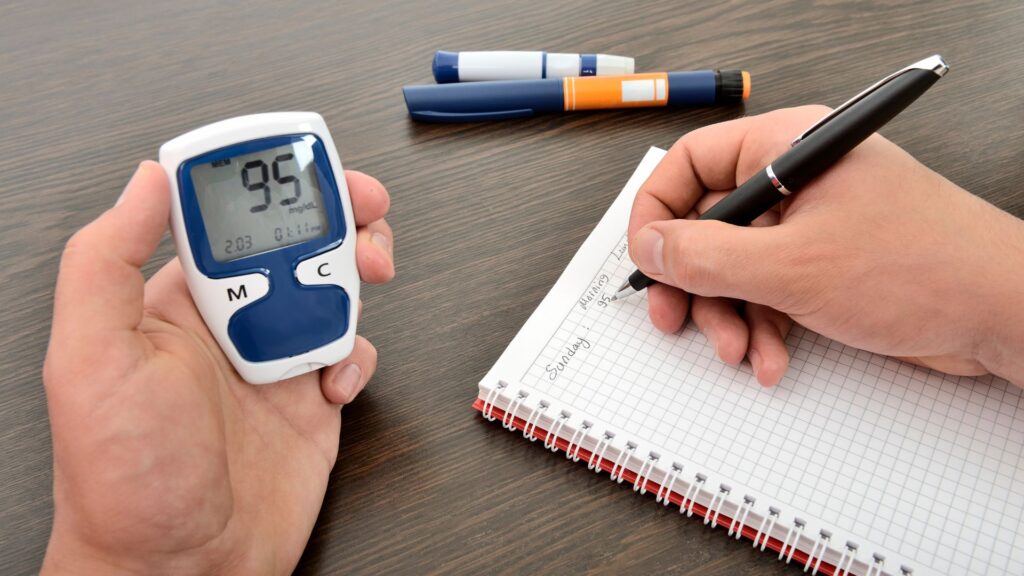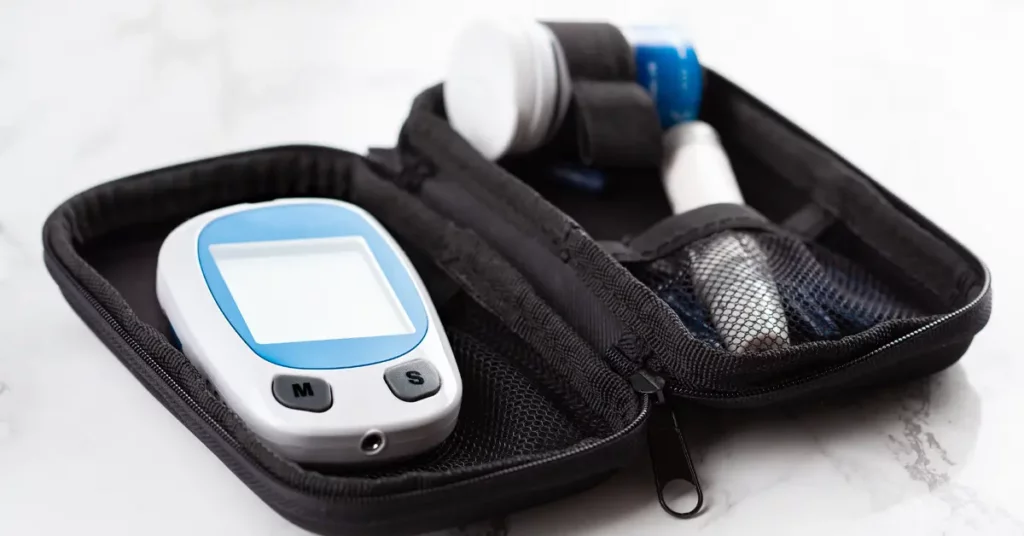
Introduction
Alongside blood sugar monitoring, health monitoring is important in preventing lifestyle diseases and ensuring an individual’s well-being. Health monitoring primarily employs blood sugar monitoring, which is important for people who have diabetes or someone who is pre-diabetic. Blood glucose or blood sugar, which is the body’s fuel source, needs to be controlled at a certain threshold to maintain the overall health of the body.
To achieve that there are different strategies that include methods to monitor blood sugar levels along with controlled balancing pointers, blood sugar monitoring is explained in detail along with its significance especially to people suffering from diabetes.
Understanding Blood Sugar

Blood sugar originates from the derogating of carbohydrates. It refers to the energy source in the body and it is predominantly managed through the action of the pancreas where insulin is secreted.
Among healthy individuals, sugar levels in the blood should not exceed the set number:
– Fasting Blood Sugar (FBS) 70-100 mg/dL
– Post Multitasking (within hours of eating a meal) Blood Sugar Less than 140 mg/dL
– Random Blood Sugar Less than 200 mg/dL
People categorized with diabetes should always monitor their diet and blood sugar levels to avoid heart diseases and loss of their kidney, vision, or nerve functionalities.
Significance of Blood Sugar Monitoring: Understanding Its Importance
Blood glucose monitoring is necessary for many reasons including the following:
1. Diabetes Management:
Careful monitoring enables people suffering from diabetes to control their sugar levels and manage drugs or lifestyle choices as needed.
2. Early Detection of Diabetes:
Individuals at risk of diabetes can identify sugar levels that are out of the ordinary and take appropriate action.
3. Preventing Complications:
Frequent monitoring reduces the risk of issues such as kidney failure, diabetic neuropathy, or heart disease.
4. Understanding Lifestyle’s Effects:
Seeing changes in sugar levels with exercise changes in diet or even with the increase in stress level gives insights into how one’s lifestyle affects health.
Ways to Monitor Blood Sugar Levels:

Monitoring blood glucose levels can be performed using a finger-prick test or more sophisticated methods like CGM – continuous glucose monitoring devices.
1. Finger-Prick Glucose Meters
This is the cheapest and single most practiced method of blood glucose monitoring out there. It entails pricking the tip of the finger with a **lancet** device, applying the droplet oozing out to a test strip and thereafter inserting the strip into a glucose meter for measurement.
Pros:
– Cost-effective and readily used across the board
– Results circulate almost instantly
– User friendly
Cons:
– Painful due to excessive pricking of fingers
2. Continuous Glucose Monitoring (CGM)
1. Fingerstick Glucose Testing (FBG)
CGM devices keep track of blood sugar through the use of a small sensor implanted beneath the dermis. This sensor measures glucose levels around the clock and sends signals to a monitoring device or smartphone app.
Pros:
– Broken down into easy-to-understand data visualization.
– When glucose levels fluctuate, customers are immediately notified.
– Pricking fingers becomes a thing of the past.
Cons:
– More costly than previous glucometers.
– Sensor requires replacing every several days.
– Frequent inaccuracies can be detrimental to users.
3. Intermittent Scanning Continuous Glucose Monitoring
Users are able to take glucose readings through a reader, phone or any other similar device that scans the sensor. The methods work the same way as flash glucose monitoring.
Pros:
– No pricking fingers repeatedly.
– No frills smartphone application available.
Cons:
– Costly and does not allow for being tracked automatically.
– Does not allow multiple frequent uploads.
4. Laboratory Blood Tests (HbA1c Test)
A famous diabetes test is the Hemoglobin A1c (HbA1c test) which is done in a lab and gives a snapshot of average glucose levels over a 2-3 month period This is widely popular for diagnosing cases of diabetes and analyzing ways to manage glucose levels over a long time.
Pros:
– Enables precise blood glucose regulation over an extended period of time.
– No requirement for routine assessment.
Cons:
– Lacks up-to-the-minute information.
– In-office appointment is mandatory.
Things that Impact Blood Sugar

There are numerous elements that can impact blood sugar:
1. Food
-Carb Intake: High carb intake leads to a rise in blood sugar levels. Examples: rice, bread, sweets, and pasta.
– Protein and Healthy Fat: Balanced protein and healthy fats maintain blood sugar levels and provide sustained energy.
– Fiber Content: Foods with high fiber content like vegetables, alimentary grains, and legumes help enhance blood sugar management.
2. Exercise
Working out supports the lowering of blood glucose levels through enhanced muscular uptake of insulin and glucose. Additionally, it improves insulin sensitivity. Standing out, strenuous activity might increase blood glucose levels due to the surge in stress hormones.
3. Oral Diabetes Medication
Other medications, like insulin, can assist in restricting blood glucose levels in diabetics.
4. Corticosteroid and Type of Drugs
A few medications may increase blood glucose levels.
5 stress Levels and Hormonal Composition.
Additively, stress increases the level of cortisol, a hormone that has the effect of raising blood glucose levels.
Employing practices including yoga, meditation or even deep breathing combat stress. These can assist in doing away with anxiety.
5. Sleep
Not getting enough sleep or having a nonconsistent sleep schedule raises one’s chances of developing insulin resistance. In turn, this increases one’s blood sugar levels. A person should aim for 7-8 hours of quality sleep a night for ideal glucose levels.
6. Hydration
Not drinking enough water can increase blood sugar levels. Inadequate hydration leads to this. Consuming the right amount of water enables the kidneys to properly eliminate glucose.
How to Maintain Healthy Blood Sugar Levels
In some instances, more than one medication may be required to maintain blood sugar levels. However, combining these medications with proper lifestyle changes can have a significant impact.
1. Follow a Balanced Diet
– Avoid processed foods, sugary drinks, and refined carbs.
– Whole grains, leafy vegetables, lean meat, nuts and olive oil should also be eaten.
– Foods that are rich in fiber must be eaten so that glucose absorption takes time.
2. Exercise Regularly
– Moderate exercises such as walking, cycling or swimming should be done for 30-60 minutes each day.
– Boost one’s insulin sensitivity with the assistance of strength training workouts.
3. Monitor Blood Sugar Levels Regularly
– Testing blood glucose levels throughout the day will help in spotting trends one has with their blood sugar rises.
– To assist with real-time checking. Use a glucometer or CGM device
4. Manage Stress
– Relaxing yoga, and breathing exercises alongside meditation can help manage stress levels.
– Participating in activities that help calm the mind.
5. Get Enough Sleep
– Strive for a consistent sleep-wake cycle.
– Quit using screens 1 hour before bedtime to increase sleep satisfaction.
6. Stay Hydrated
– Drink at least 2-3 liters of water per day.
– Cut down on caffeinated and sugary drinks.
7. Take Medications as Prescribed
– Follow your physician’s instructions regarding insulin and medications, if you are diabetic. If a doctor prescribes any medication, NEVER self-moderate your dosage without consulting a healthcare professional.
Conclusion
The most important part of diabetes management is studying one’s blood glucose levels regularly. Patients require constant supervision to diminish risks and elevate their life quality, whether it is practiced with a standard glucometer or the upcoming CGM system. This, together with a proper diet, active lifestyle, stress relief, and medication, will guarantee that one’s blood glucose level is balanced so as to enjoy life to the fullest.
If anything suspicious regarding blood glucose levels comes to light, consult a qualified healthcare professional for appropriate diagnosis and treatment.
